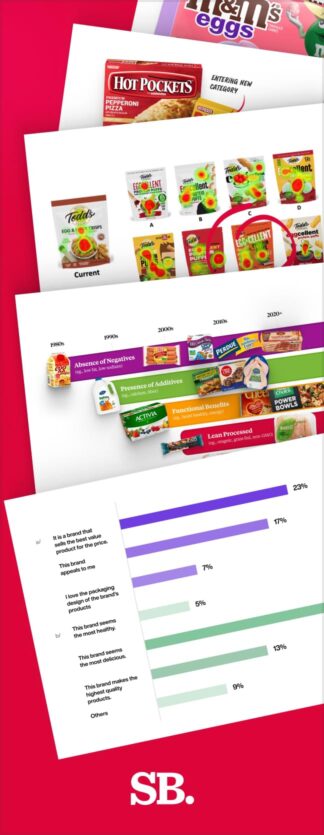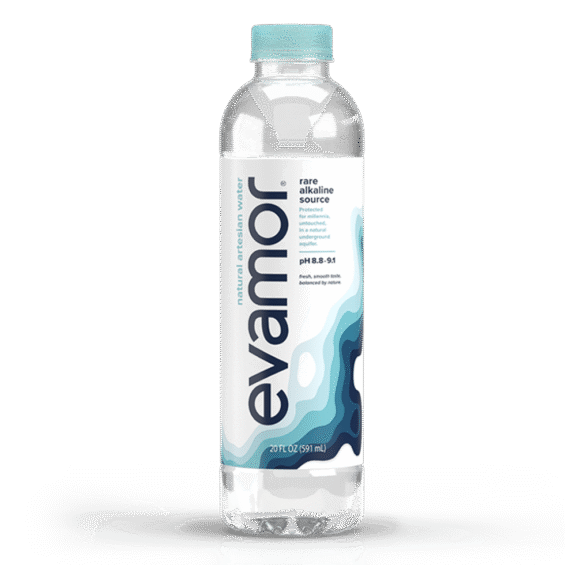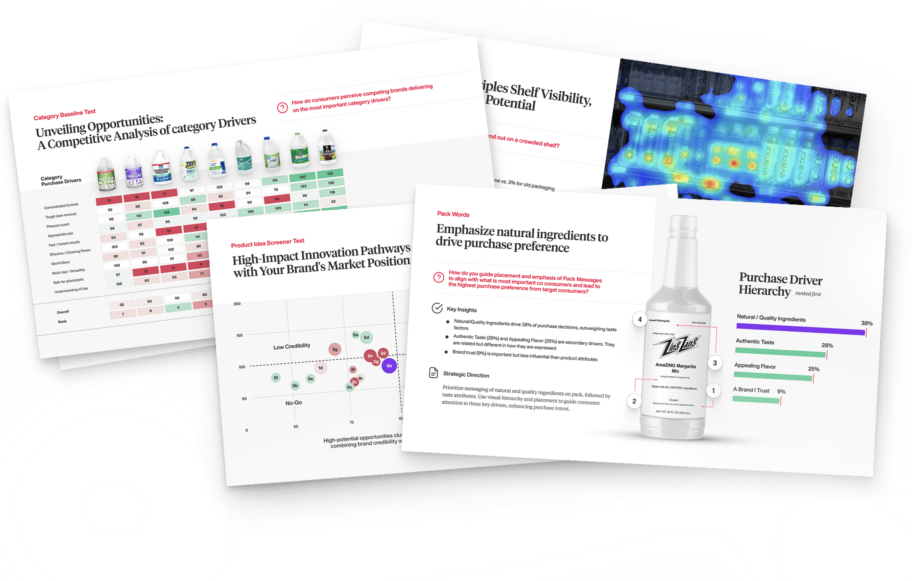Rebranding trends in 2025 will reflect the massive technological and cultural shifts in the marketplace. Look at the past ten years and see how technological advancements have changed almost every business. Facebook became Meta, Twitter became X, and even Google incorporated artificial intelligence into their search.
See how the rise of social media, mobile technology, AI, and big data have disrupted industries and altered consumer behavior. In this rapidly evolving landscape, brands cannot afford to stand still. Periodic rebranding is essential to remain competitive and appeal to new audiences. 2025 will be a landmark year for successful rebranding strategies as companies embrace new strategies to captivate customers.
This article serves as a complete guide and explores the top rebranding trends defining marketing in 2025. By analyzing the current branding trend and industry insights, you will learn why rebranding became imperative and how to approach it strategically.
Top rebranding trends.
Rebranding trends have evolved exponentially in the past few years. These branding changes reflect consumer behavior, technological advancements, and cultural shifts. Some of the significant and recent rebranding trends are as follows:
AI integration in rebranding 2025.
The advent of generative AI and large language models has revolutionized the digital world. Companies quickly embrace these new trends to position themselves better than their competitors. AI integration also provides a better customer experience.
For instance, Adobe has equipped its new version of Photoshop with generative AI. It allows users to retouch pictures, edit them, and make new changes quickly. Seeing the increasing consumer interest in AI, Google shaped its traditional search to provide AI-generated results. Biggest brand names use predictive analytics to monitor their brand trends and performance before and after rebranding.
Sustainability in branding.
In recent years, consumers have become more conscious about the environment. Therefore, sustainability is one of the biggest factors that make brands rebranding and repositioning themselves to reflect environmental values and sustainable practices.
For instance, fast fashion retailer H&M announced rebranding plans to use only recycled or sustainably sourced materials by 2030. As part of this shift, H&M will likely update its branding and marketing to showcase its sustainability commitments.
Similarly, PepsiCo recently redesigned the packaging for its Aquafina water brand using 50% recycled plastic. The new minimalist packaging highlights this eco-friendly change. Other CPG giants will follow suit with sustainability-focused rebrands.
Beyond recycling, brands focused on carbon neutrality and renewables will rebrand to tout their efforts. Google has already branded itself 100% carbon neutral. Expect other tech firms like Microsoft to adapt their branding strategy and amplify their renewable energy and net zero initiatives.
Rethinking social and racial stereotypes.
Companies rebranding in 2025 are reexamining logos, names, and packaging that perpetuate stereotypes as part of their strategy. Recent rebrands like Aunt Jemima and Land O’Lakes are proven examples. Rebranding reflects growing societal efforts to promote racial justice and inclusion, so it is necessary for such brands.
For example, Mars Foods announced that it would evolve Uncle Ben’s brand, including the racially stereotypical logo of an elderly African American man. Mars Foods will likely complete an inclusive new brand launch by 2025.
Anheuser-Busch InBev is rethinking the traditional Mexican caricature on Stella Artois beer packaging as part of its brand strategy. The company aims to ensure its branding aligns with contemporary values through rebranding.
Other brands with Native American imagery, like Land O’Lakes, will strategize their rebranding launch. It doesn’t mean abandoning heritage. Businesses can rebrand thoughtfully by consulting stakeholders and preserving their legacy.
Personalization.
Companies are taking strategic steps towards rebranding to incorporate personalization in their branding strategy. This move caters to consumers expecting tailored products, messaging, and services. Companies may leverage data analytics and AI for successful rebranding strategies focusing on customization.
The benefits of rebranding around personalization include enhanced customer satisfaction, engagement, and loyalty. Unilever is an excellent example, offering a personalized beauty subscription service. It matches products to users based on individual needs and preferences.
Other CPG and FMCG brands will follow suit, reorienting their identities, offerings, and messaging around hyper-personalization. Companies that invest in enabling customized brand experiences will be well-positioned to meet consumer demand.
Simplicity in design.
Simplicity in design is becoming a popular trend across various areas, including packaging, websites, and logos. Companies are following the principle of “less is more.” They are rebranding package designs to communicate their message elegantly and to remove clutter.
By doing so, they can elevate their unique brand identity and positioning. Companies from various industries, such as CPG, retail, and technology, including P&G, Walmart, and Microsoft, are adapting their rebranding checklist around minimalism.
Substituting letters for icons.
Design elements have always been powerful assets for companies. People love to read short and easily-to-remember brand names, which companies see as an opportunity to rebrand to align with consumers’ interests. In recent rebranding, combining letters with icons has become a new trend.
When tackling rebranding questions, companies must consider how icons can represent their brand’s essence while maintaining readability. They must ensure a balance between visual simplicity and communicating with clarity.
During this stage, brands may leverage rebranding survey questions to probe consumer perception, asking how these icon-infused logos resonate with their experience and understanding of the brand.
Nokia, one of the earlier smartphone companies, refreshed its logo in 2023 and gave it a simple, modern look. The company turned the N, K, and A into symbols, giving a sleek and elegant look.
Mission first branding.
brands that need rebranding started targeting sustainability as consumers became more conscious about the environment and their health. But putting an echo-friendly or healthy tag on the product packaging design isn’t enough anymore. To differentiate itself, a company must incorporate its brand story, mission, and value into its identity.
For instance, Liquid Death, a sparkling water brand, aims to get people to drink more water and stop plastic pollution. The company puts its mission first without mentioning that it is eco-friendly. According to NBC News, anti-Asian hate crimes increased by 339% during 2021. During this time, Cukui, a streetwear clothing brand in San Jose, California, launched its branding campaign.
The brand name Cukui represents its multicultural heritage. According to the founder, Jason Locquiao, the name combines two words from different cultures. In Hawaiian culture, the “kukui nut” symbolizes wisdom and enlightenment, while in Mexican culture, “cucuy” refers to the boogeyman. The founders chose the name Cukui to blend these two elements.
Elevating brand personality with mascot.
Mascots are not just logos; they are powerful tools to reinforce the brand message. These elements help companies to grab the attention of their audience. Most companies use mascots to rebrand to develop a complete effect in the audience’s minds.
Recently, businesses have witnessed a rising trend of strong brand mascots. These mascots use human characteristics to bring a strong personality. People love to connect. Therefore, companies are rebranding to align their brand positioning with the interests of their target audience. Duolingo’s owl mascot can be a great example to consider.
Humor and satire.
Humor and Satire are powerful communication tools. It helps companies reshape perceptions, stand out, and better connect with the target audience. When done right, infusing humor during logo rebranding, website, and other touchpoints can evoke positive emotions.
Businesses must walk a fine line when taking a humorous approach to rebranding. The aim is to be with without offense that aligns with the brand identity. Intelligent and subtle Satire tends to resonate better with slapstick. For instance, Charmin’s rebranding to poke fun at toilet paper shortages worked because it aligned with a lighthearted brand image.
Drivers of rebranding 2025.
Rebranding can be both beneficial and risky. There are multiple rebranding examples where companies lost a fair market share right after rebranding. One of the most notable instances is the Tropicana rebranding. Likewise, Twitter faced a lot of negative feedback from its audience when it recently changed its name and logo to X.
A company embarking on a rebranding journey must have solid reasons. The following are some of the main drivers of rebranding:
Responding to market trends.
One solid reason behind rebranding a company is responding to the changing market trends. A company may change its brand design to match the evolving trends and stay relevant. Conducting thorough market research to learn the changing patterns of customers’ preferences is necessary.
Executing a complete rebrand is not always necessary when responding to market trends. Sometimes, a company may need a brand refresh to renew its outdated image. This may involve a visual identity element such as graphic design, brand messaging, or marketing materials.
Evolving consumer preferences.
Consumer preferences are rapidly evolving, becoming a key driver of rebranding in 2025. A prime example is the rise in plant-based and vegetarian lifestyles. As consumers adopt greener, more ethical diets, CPG brands like Tyson Foods planned a $100 million rebranding effort.
The company considered product rebranding to introduce plant-based meat alternatives. It shows how rebranding to meet changing preferences can unlock new opportunities. Companies rely on specific rebranding checklists to guide their process as consumer demands evolve. It involves in-depth research into the target audience and deciphering emerging needs and desires.
Businesses trying to match customers’ changing needs must follow a proven rebranding template when embarking on the journey. It will maximize the chances of success and bring results quickly.
Technological advancements.
When Google launched Android OS, many smartphones adopted it except Nokia. Even though Nokia had dominated the market with its Symbian OS, the company then faced a nose dive in its market share. The main reason behind the brand’s failure was not adopting the technological advancements.
Technology shapes the market. New trends emerge with time. Companies must adopt them to stay relevant; otherwise, they will become history like Nokia. Recently, AI and large language models (LLMs) have revolutionized the online world. Businesses are not only adopting these technologies to be in the mainstream but also using them smartly to develop a distinguished brand identity.
Competitive pressures.
Consumer markets are becoming congested with new brands launching frequently. Brands are facing fierce competition from private-label products. Under such conditions, competitive pressures increasingly drive brands to rebrand in 2025.
When brand consistency and recognition decline in the face of rival brands, rebranding becomes necessary to tune the brand’s position and awareness in the marketplace. Rebranding can help a brand change perceptions when competitors gain more traction and increase brand awareness with target demographics.
It involves overhauling visual identity, including logo design, packaging design, taglines, and messaging. These tactics can help companies stand out with a distinguished brand identity. Companies must ensure brand consistency across all touchpoints to maintain a coherent voice and brand recognition.
Promoting the new brand identity.
Companies may leverage rebranding to develop and promote a new brand identity. For instance, a company may want to expand its business to other product lines or services. Under such conditions, it may strategically plan the rebrand to reposition itself without alienating the current customer base.
Brands may leverage digital marketing and social media to increase awareness of the refreshed brand among the target customers. They may offer sneak peeks to create a buzz around the new brand identity. Strategic messaging and campaigns aid the transition, retaining brand loyalty by reiterating core values after the change.
Key takeaways from rebranding trends for marketers.
- Develop a strategic marketing plan to guide rebranding efforts and goals. Ensure the purpose aligns with business objectives.
- Optimize design elements for flexibility across platforms while retaining brand recognition. Prioritize simplicity and minimalism.
- Maintain brand consistency through coordinated visuals, messaging, voice, and customer experiences.
- Track brand equity metrics pre and post-rebrand to quantify the impact and optimize.
- Leverage digital marketing and social media to increase rebrand visibility and transition customers.
- Balance heritage and innovation. Celebrate your origin story inside the change.
- Take an agile, future-focused approach to rebranding. Meet evolving consumer demands.
- Convey brand personality and values over just functional benefits. Make an emotional connection.
- Implement rebrands gradually to retain familiarity. Proactively communicate changes.

Nice Package
Don’t miss out on our monthly newsletter Nice Package!
Each month, we deliver a data-driven newsletter directly to your inbox, unpacking a critical topic in the FMCG & CPG industry.
"*" indicates required fields
Make data-driven rebranding for CPG brands.
If you’re looking for a reliable way to rebrand your business and ensure top performance, we can help. Our expert strategists and testing specialists conduct thorough research, design effective strategies, and validate all brand assets to ensure they perform exceptionally well in the marketplace. Book a call to learn more about how we can help you find the perfect name and discuss your project with our team.
Subscribe to
Nice Package.
A monthly newsletter that unpacks a critical topic in the FMCG & CPG industry.
Free Resource.

CPG product repositioning guide.
Explore the five undeniable signs your CPG product needs repositioning along with strategies for leveraging consumer insights for a guaranteed market lift.
Learn More About CPG product repositioning guide.


